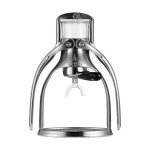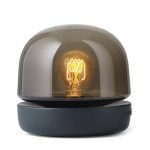Rackets, Discs & Catchers
Rackets and discs are used in various sports and recreational activities. Here are some interesting facts about rackets and discs:
Badminton Rackets: Badminton rackets are used in the sport of badminton, which originated in ancient civilizations. The game is played with lightweight rackets and a shuttlecock. Badminton is known for its fast-paced rallies and requires agility and quick reflexes.
Disc Golf Discs: Disc golf is a sport similar to traditional golf, but instead of using clubs and balls, players use specialized discs. These discs are designed for different flight patterns, including drivers, mid-range discs, and putters. The objective is to complete a course by throwing the discs into designated targets, such as metal baskets.
Flying Discs: Flying discs, commonly known as Frisbees, are popular toys and are also used in sports like Ultimate Frisbee. The Frisbee was invented in the 1940s and has since become an iconic recreational item. It is made of plastic and is designed to be thrown and caught in various ways.
Pickleball Paddles: Pickleball is a paddle sport that combines elements of tennis, badminton, and table tennis. The game is played with a solid paddle and a plastic ball with holes. Pickleball paddles are typically made of lightweight materials like wood, composite, or graphite.
Tennis Rackets: Tennis rackets are used in the sport of tennis, which dates back to the 19th century. Tennis rackets have evolved over time, with modern rackets made of lightweight materials like graphite or carbon fiber. The design and materials used in tennis rackets can affect a player’s performance and playing style.
Racket Sports: Racket sports, such as tennis, badminton, squash, and racquetball, offer a range of physical and mental benefits. These sports require hand-eye coordination, agility, and strategic thinking. They provide opportunities for social interaction and can be played at various skill levels.
Recreational Activities: Rackets and discs are also used in recreational activities like beach paddleball, catch games, and backyard games. These activities promote physical activity, coordination, and fun outdoor play.
Why do rackets have holes?
Rackets have holes for a variety of reasons, all of which are related to the performance and playability of the racket. The most common reason is that it helps reduce air resistance when playing. This allows players to move their arms more quickly during rallies, resulting in faster shots with greater control over direction and spin. Additionally, having holes in rackets increases flexibility by reducing weight around the frame while maintaining strength at key points on the racket head. This improves maneuverability and power transfer from player to ball without sacrificing accuracy or durability.
The second reason why rackets have holes is for string tensioning purposes - additional strings can be added through these openings which increase tension across different parts of a racquet’s face providing enhanced control as well as increased power potential due to improved energy transfer between strings and ball upon contact . Furthermore, this also gives players an opportunity customize their racquets according to individual preferences such as string type (synthetic gut vs multi-filament), gauge (thickness) , pattern layout etc., allowing them find optimum balance between comfort/feel along with desired levels performance/power output .
Finally , another benefit associated with having hole patterns on frames relates directly towards cosmetic appearance – manufacturers often design unique shapes into frames using placement & orientation of various sized circular cutouts giving each model its own distinct look & feel helping differentiate product lines from one another while simultaneously creating visual appeal among consumers who may prefer certain aesthetics over others . In conclusion , although some may view them simply just ‘holes’ they actually serve vital roles within modern day tennis equipment both functionally & aesthetically speaking making them essential components found within today’s high-performance tennis gear designs .
Why is it called a racket?
The term “racket” is used to refer to a variety of sports equipment, but its origin has an interesting story. The word originated in the late 19th century as a slang term for any kind of business or activity that was considered shady or illegal. It was likely derived from an older Irish word meaning "noisy," which aptly described these activities and their participants.
In the early 1900s, people began using it more specifically to describe tennis rackets due to their unique shape resembling something like a shield with handles on either side - just like someone might use if they were trying to protect themselves from harm! This resemblance gave rise to the phrase “playing with your racket” when referring metaphorically speaking about taking part in some sort of dubious enterprise or activity.
Over time, this expression became shortened simply as “racket” and eventually came into common usage today for all types of sporting equipment such as badminton racquets and squash rackets among others. So while we may not know exactly why it's called a racket anymore, we can certainly appreciate how far this slang term has come since its inception!
How many holes does a racket have?
Rackets, also known as racquets, are a type of sports equipment used in various racket-based sports such as tennis and badminton. One of the most common questions about rackets is how many holes they have. The answer to this question depends on the type of racket and its intended use.
Modern tennis rackets usually have either seven or eight main strings arranged in an interlocking pattern with small gaps between them that form “holes” for air to pass through when swinging the racket during play. These strings are typically made from nylon or Kevlar materials so that they can withstand repeated impacts without breaking down too quickly over time due to wear and tear from playing games regularly. Badminton rackets will generally feature six main strings arranged in a similar fashion with smaller holes along their length, allowing players more control over their shots by providing increased spin potential compared to traditional tennis rackets which tend not to offer much spin capability at all due solely to their design structure alone.
Finally, squash racks often come equipped with twelve separate stringing patterns designed specifically for better maneuverability around corners while still providing enough power behind each shot when needed during intense rallies against opponents on court surfaces like hardwood floors where speed is key for success! Each individual string has tiny little perforations running along it which create even more “holes” than what would be found on other types of sport-specific models mentioned above; however these do not necessarily affect gameplay nor do they provide any additional benefits aside from aesthetic appeal - making them purely decorative features rather than practical ones overall






